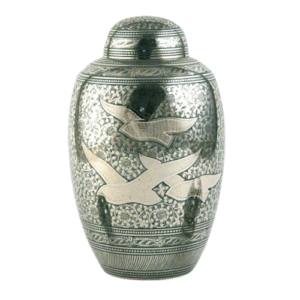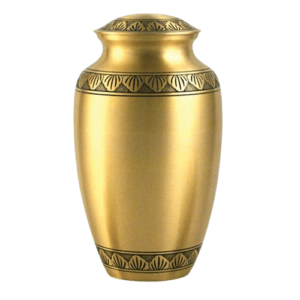A Long History of Funeral and Cremation Memorials
Funeral Urns for cremation ashes, also known as cinerary urns, have been used for centuries to memorialize the dead during funerals and after. In their early days, funeral urns were all typically molded and shaped to look similar. But today’s funeral urns can be as unique as the people they memorialize.

The Ancient Greeks began the tradition of funeral urns with a special type of urn called a lekythos. Later, in the days of the Roman Empire, funeral urns were typically displayed together in a collective tomb called a columbarium. Such tombs are still common today in many modern cemeteries.
Funeral urns have inspired a number of great literary works over the centuries. Most notably, perhaps, is John Keats’s classic “Ode to a Grecian Urn. And, in 1658, English writer Thomas Browne explored similar themes about funeral urns in his Hydriotaphia or Urn Burial, a classic work prompted by the discovery of a Bronze Age funeral urn in Norfolk, England.
While many cemeteries still play host to collections of urns, it is, probably, most uncommon to see funeral urns in private residences. That said funeral urns are also commonly buried in standard graves – often atop the grave of a loved-one. And then there are special, smaller-than-average- “keep sake” funeral urns that are often used by far flung families who want to share the ashes of their loved ones. And, special biodegradable funeral urns are often used today to provide an environmentally friendly disposal of cremation ashes.
Whatever their ultimate destination, funeral urns are particularly appropriate for memorializing a loved-one because they can be personalized. The décor of funeral urns can speak volumes about the people the funeral urns memorialize, assuring that memories stay alive for generations to come.

Funeral cremation urns come in a wide variety of materials and styles. Funeral urns can be made of wood, bronze, metal, marble, glass, or ceramic. Different materials, of course, are required for different purposes. If they are to be buried, funeral urns are usually made of bronze or some other metal. If they are to be displayed beautifully at a funeral or in a home, funeral urns are often made of glass, wood, or ceramic. And if they are to be displayed outdoors – or as part of a columbarium – funeral urns can be made of marble.
Urns for funerals are often styled for very specific uses. Elaborately decorated funeral urns are used for display in residences and during funerals. Smaller urns are used for the ashes of children or infants. Some funeral urns are designed specifically to hold the ashes of two people. And still other funeral urns are designed and decorated to follow important religious, military, or family themes.
Funeral urns have been around for centuries as beautiful tools for assuring that a person’s memory lasts for the ages. Though many have the same basic purpose, storing the ashes of the deceased, urn vessels are also all as unique as the people they memorialize.
